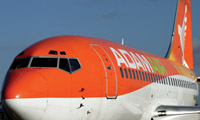20th Anniversary Issue: Safety
Asia improves safety record
October 1st 2013
The Asia-Pacific has made great strides in improving its safety record in the last 20 years. Read More »
In 2003, one of the most significant initiatives to assist the region and global aviation safety in general, was the IATA Operational Safety Audit (IOSA). IOSA offers a quality audit programme under the oversight of IATA.
In September this year, the audit was upgraded to an Enhanced IOSA.
The major Mainland Chinese carriers are among the 70 IOSA accredited airlines in the Asia-Pacific, which also includes Asiana Airlines, Korean Air (KAL), China Airlines, Philippine Airlines (PAL) and Garuda who have had their own safety issues over the last two decades.
In the 1990s, after airlines from Taiwan, South Korea and China, in particular, had several major accidents which took hundreds of lives, carriers invested millions of dollars in cockpit crew management and flying skills upgrades, notwithstanding the Asiana Airlines crash at San Francisco Airport in September this year, which killed three passengers and injured 181 of the 307 people on board.
In 1997, after a KAL B747 crashed in Guam, killing 226 of the 254 passengers and crew on board and seven incidents in the same year, the South Korean government stripped KAL of 138 flights a week, for six months, on 10 of its most profitable domestic routes.
Two years later, following the crash of a KAL freighter shortly after take-off from Shanghai, which killed three crew and several people on the ground, the airline implemented a five-year, US$200 million safety programme. It also paid $30 million for U.S. training company, Flight Safety International, to improve crew flying skills and human factors behaviour in the cockpit.
Orient Aviation revealed Asia was bottom of the air safety league in the 1990s. Almost a third of the 8,251 global fatalities in air accidents occurred on flights operated by Asian airlines.
However, by 2004 Asia had reduced its share of fatal crashes to one fifth of the total worldwide.
 |
| Adam Air: the Indonesian carrier went out of business following a 2007 crash which killed 102 people |
In 2007, Europe banned carriers from Indonesia when it was found the country had insufficient qualified staff at government level to oversee and maintain international safety standards.
Philippine carriers were banned for the same reason in 2010. In the same year, the U.S. Federal Aviation Administration (FAA) downgraded the Philippines airline operations to a category two rating because of safety concerns, which meant PAL, the only carrier in the country flying to the U.S., could not add frequencies and destinations or change to more fuel efficient aircraft.
In 2009, Garuda Indonesia, and three other Indonesian carriers, were cleared to fly to Europe. PAL was given the green light in July this year.
Meanwhile, in 2011 airline experts were expressing their fears that skills shortages on the flight deck and in maintenance hangars were putting safety at risk.
Boeing has said that the industry will need more than one million pilots and maintenance technicians by 2030. Of those, 183,200 new pilots will be required in the Asia-Pacific. China alone will need 72,700 more pilots, according to Boeing. The Asia-Pacific will require 247,400 additional maintenance personnel to 2030, 108,300 of them in China.
The current shortages are most acute in China, India, Indonesia and the Philippines. In 2012, Wang Zhenghua, chairman of China’s first private carrier, Spring Airlines, said: “The [pilot] shortage is the biggest restriction to our development.” Planned routes had been put on hold, he said.
Among the fears that the industry has are: less experienced cockpit crews having to deal with complex, ultra modern aircraft; pilots from different cultures sharing cockpits that creates communications issues and similar dangers in maintenance hangars as the staff face pressure from increasing volumes of aircraft requiring maintenance.
“We have seen this coming for years,” said Bill Voss, head of the Washington-based Flight Safety Foundation. “Now here we are. It’s pretty clear we are not doing enough about it.”